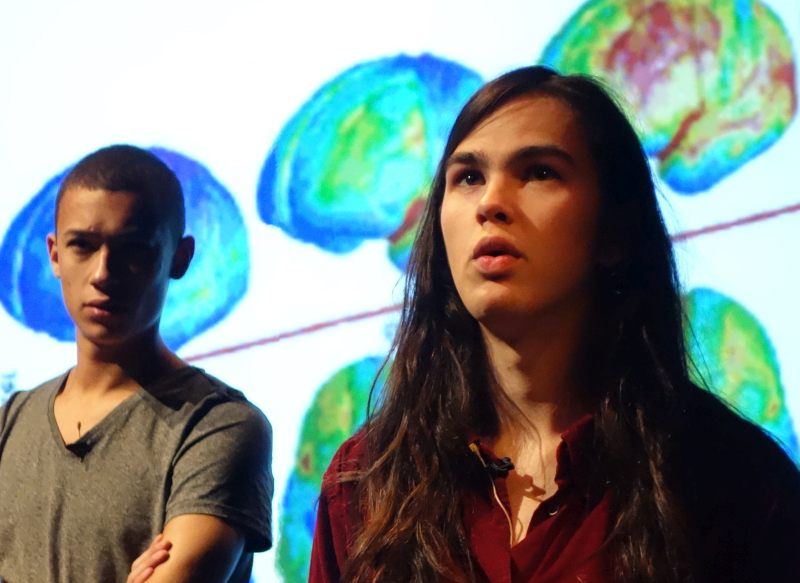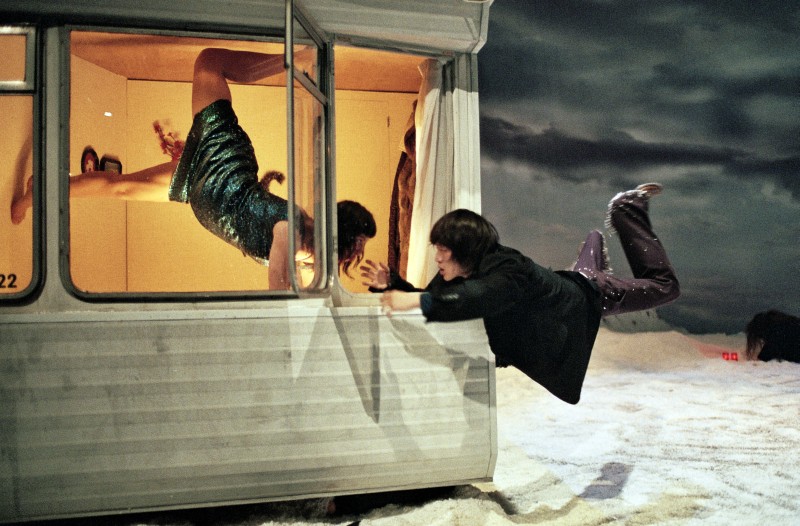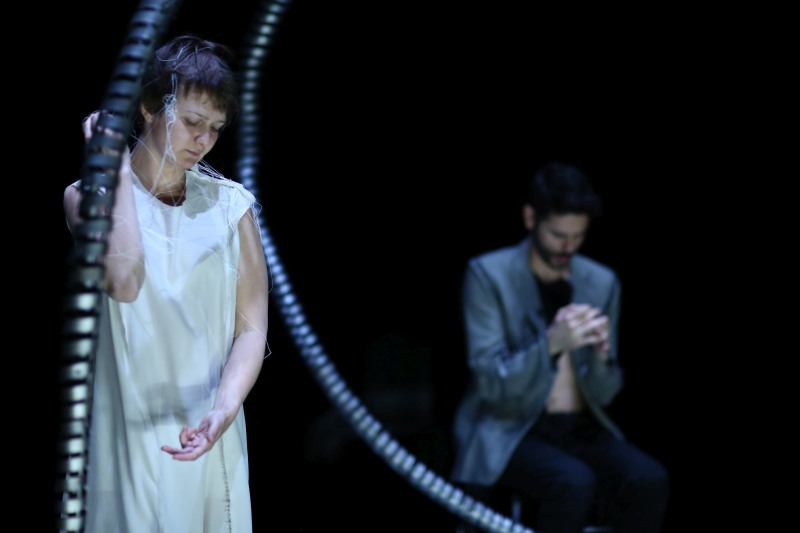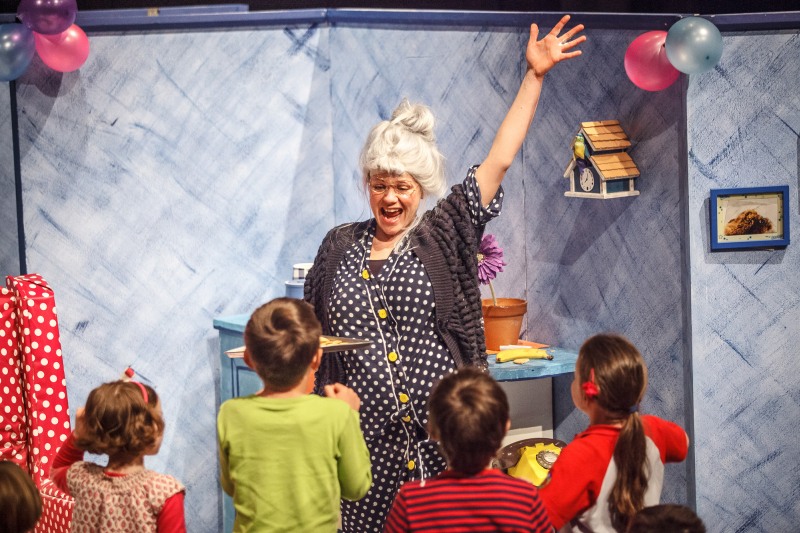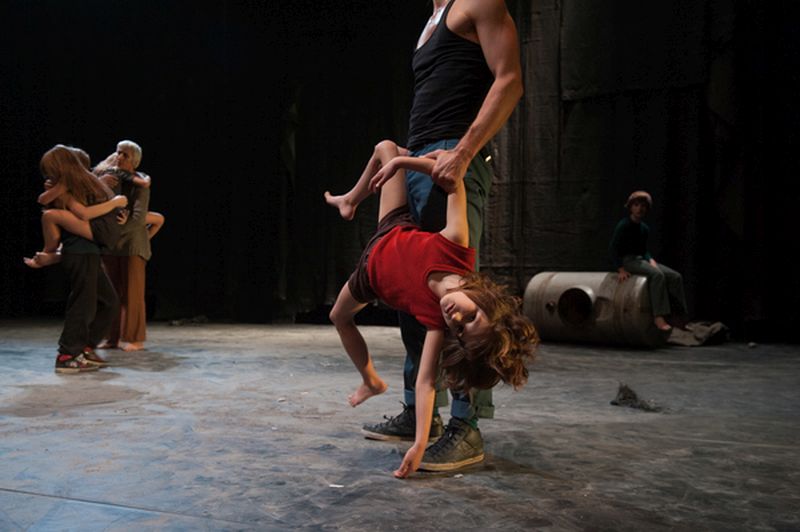 Kabinet K is a Belgian contemporary dance company founded and run by choreographers Joke Laureyns and Kwint Manshoven, who also bring a background in philosophy and design. The company’s performance works are intended to connect with both young and adult audiences: likewise in their work, children and professional performers work side by side as equal artistic partners.
Kabinet K is a Belgian contemporary dance company founded and run by choreographers Joke Laureyns and Kwint Manshoven, who also bring a background in philosophy and design. The company’s performance works are intended to connect with both young and adult audiences: likewise in their work, children and professional performers work side by side as equal artistic partners.
RAUW/RAW commences with a dim, dark stage, and an ambience full of trepidation revved through and racing with the pulse of live electric guitar. Dust spills down, greying up the space, and settling onto a floor smattered over with a scattering of small rocks. From the shadows, a small child scampers in, grabs a rock, and dashes away. Another child rushes in, grabs a rock, hastens away, then another and another, their fretful pace accompanied by the frenetic guitar. They run, pause, leap; bright eyes piercing the luminous grey half light, rushing in and dashing out until every scattered rock is gone. They have great poise and sharp timing and are pretty little, some of them, leading me to think, ‘Shouldn’t they be in bed?’
Soon they all rush on as a pack, a gang of seven prepubescent children (five girls, two boys) in t-shirts and shorts, full of leaps and bounds, and the urgency dissolves into a playfulness; a scampering of jumping and catching, bounding leaps and flowing hair. There follows a tussle over a weathered old mattress between a small girl and a virile-looking bloke, who ends up chucking her around. It’s initially challenging to watch, yet dissolves into a duet about control, oneupmanship, rough play, and the elation of abandonment to physicality. Another adult enters the space, tinkering with kettle and camp stove. She’s an older grey-haired woman. The children eye her every move, she performs a ‘grasping at a kid’ duet, pulling at a girl’s arm and sleeve, pulling the little one to her in an awkward manner. The kids all sing a ‘yea, yea, yea’ sound to accompany another ‘clumping about’ duet.
Like a fury, a little girl chases and confronts the fit-looking bloke. All the kids chase him. Water streams down the rear wall’s torn, tatty, raggy grey backcloth. The dust on the ground gets stirred up. The children nest and rest on the soiled old mattress. A disused water tank cylinder at the rear becomes a sanctuary. What kind of wasteland playground is this? Kids of the dump? I was fortunate to be accompanied by my 15-year-old neighbour. She tells me RAW so resonates with her, as it completely reminded her of her own childhood, a childhood clambering about on scraps of forsaken land, where broken tiles she collected became treasures of varied patternings and colours. She climbed on broken furniture and made an imaginative world from dumped oil drums and mattresses. That was just five years ago back in Turkey. Play, in a way that children have always played, and always will, if given access to some unoccupied space.
Upstage, a girl balances precariously on the water container drum, in the foreground a bare-chested girl sits on the older woman, grasps, studies, and plays with her submissive form, her hand, her face, examining and placing her own hand on the aging older forms. Empty cans are thrown out from the water tank. Relentless guitar from the sidelines jangles my nerves a bit, relieved by one child’s soundscape of piggy grunts and gasps and raspberries. The kids play with matches, one busting open a tin can and handing out amongst themselves the meagre sustenance of tinned sausages. A girl skilfully treads a revolving can. The kids are a combination of robust bodied, wonky kneed, and lanky limbed, straggled haired and fresh faced.
RAW is…. odd, and a touch uncomfortable to watch. Little kids are grabbed at by adults, little girls being chucked about like fleshy rag dolls isn’t comfortable viewing. The show brims with contrasts and changes of dynamic. Vitality and vulnerability. Fearless ferocity and fragility. Pint-sized yet full blooded. Who has the upper hand? Who is in control? What and where is common ground? The littlest girl in the company, in her T-shirt that states ‘ME OH MY’, is a real powerhouse and comes across as being the most formidable. All the children’s performances are raw and essential, the adults less so, a little measured. Both wild yet skilfully precisely choreographed, the timing and ensemble work is beyond par. Full-throttle energy, response and focus. Heaven and hell surges through their diminutive frames, these glorious unfettered dancing souls emanating their hopes, dreams, fears, and resilience. RAW has sincerity. Immediacy. Care contrasted with anarchic abandonment to the moment. Life on full beam. Glances that cut right through. ‘Here I am. Here we are’. An eternity of yearning and searching for adventure, discovery and inventiveness, for comradeship, for rest, peace, and place in the world, that is inside all of us.

